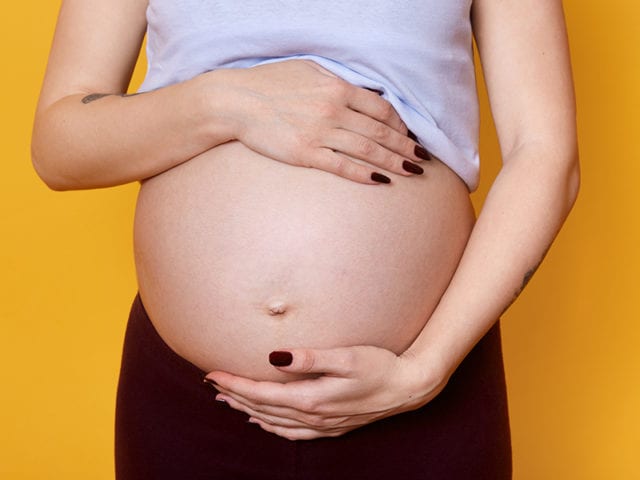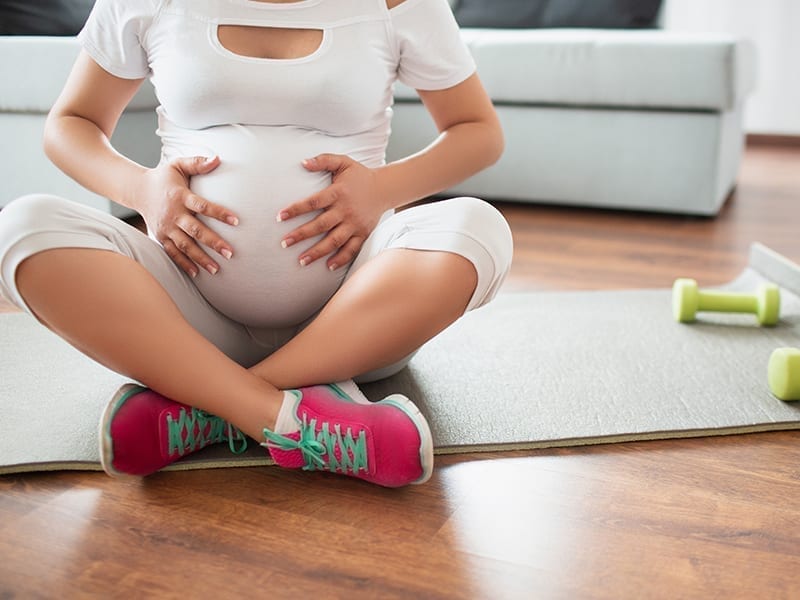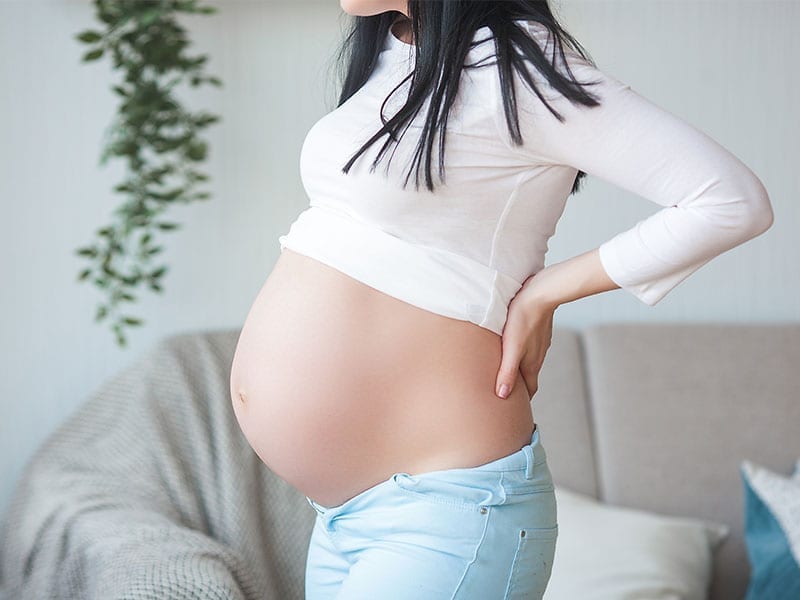Giving birth is definitely one of the most life-changing events for a mother. And while most hope for it to be a positive experience, it’s not uncommon for moms to be traumatised or even suffer from depression after childbirth. Commonly known as postpartum depression, a good way to prepare yourself mentally and physically is to gear yourself with all the right information. And while you may have drafted a birth plan, don’t be surprised when things don’t go as you thought they would. You may have to undergo a C-section or have a vaginal delivery; just remember that both are ‘normal’ deliveries and it’s the state of the mommy and the baby that determine how the child can be brought into the world in the safest manner.
Dr Madhushree Vijayakumar, Consultant Obstetrician and Gynaecologist with Motherhood Women & Children’s Hospital answers some of the most commonly asked questions about vaginal childbirth and helps us understand the risks and postpartum care associated with it.
1. Who can have a vaginal delivery? When is it a must that a woman goes in for a C-section?

Anyone with a healthy pregnancy can have a vaginal delivery. There are times where a C-section is either planned or in other instances, where it’s an emergency. The stay in hospital after vaginal birth is much shorter than that of a C-section. There has been a considerable rise in the number of C-sections happening over the past years. A planned C-section is usually recommended when there are complications with the placenta like a low-lying placenta, the position of the baby, or complications when you have multiple babies. An emergency C-section is done when the labour isn’t progressing, delay in labour after induction and excessive vaginal bleeding/fetal distress.
2. Can you explain what exactly happens during vaginal childbirth?

A woman’s body is so beautifully designed to help her during childbirth. The shape of your pelvis, your hormones and all those powerful muscles work together in unison to bring a new life on earth. A few weeks or days before childbirth you will experience what is called the Braxton Hicks contractions. Contractions are nothing but your uterus tightening and relaxing. This is a method that your body uses to prepare yourself for childbirth.
As the time for labour gets closer your cervix wall becomes thinner, getting you ready for dilation. After this, your baby will slowly move down to your pelvis and its head sits in place over your cervix. The next phase is the water breaking phase. Here you have to look at the colour of the discharge and make sure your healthcare provider is updated. Most women in real life never realise that their body has actually gone into labour. They tend to feel restless, have back pain, period-like pain or disturbances in the stomach like diarrhoea.
3. The pain of labour is what most women worry about. Is there a way to prepare or work through it better? What if a mother can’t handle the pain while in the process of delivering?
Pain during labour is common and faced by almost all women. This is caused by the contractions of muscles in the uterus and the pressure on the cervix. You might also experience cramps in your stomach, groin and back. Pain varies from woman to woman and from labour to labour. So, there is a set intensity that every woman faces during every labour.
A few ways you can prepare yourself for the pain is by doing reasonable exercises recommended by your doctor. This will help your body in stretching and preparing yourself for birth. There are various childbirth classes that you can opt for with your partner and practice as well. Lamaze classes are a great way to go as it teaches relaxation techniques, distraction and breathing exercises that decrease the perception of pain. Depending on the situation, your doctor might also recommend medicines to help you cope with the pain. These can provide a great amount of relief. Other medicine-free methods would be walking, listening to music, yoga, meditation, massage or just distracting yourself.
4. How can pain medications affect a mother & a baby during labour?

Too much medication during the premature stages of pregnancy is never recommended. However, the medicines given during labour are never intended to harm the mother or the child. It is in fact to ease the process of childbirth. Although one feels considerable relief taking medication, it is important to keep in mind that there are side effects like drowsiness and headaches. Your partner’s support during labour plays an important role to reduce the requirements of medications for pain relief.
5. Where are some places parents can go for vaginal childbirth, apart from hospitals?
You can always choose where you want to give birth. Home births are becoming a popular option today where most women prefer the comfort of their homes to give birth to their child. In this case, the medical professionals come home with all the necessary equipment and ensure you have a comfortable, healthy birth. Another option is choosing to give birth in a birthing centre. While choosing to do a home birth, it is important to keep your doctor and the midwife/labour nurse informed and updated. Always be prepared to go to the hospital if the situation gets complicated.
6. Is it true that engaging certified & trained midwives during such a process can result in shorter labour and fewer chances of a C-section?
Not necessarily. A certified midwife has nothing to do with inducing shorter labour and reducing the chances of a C-section. Yes, they are well trained and provide the most care ensuring you do your best to have a child naturally, however, they are not responsible for complications that result in attempting a C-section. A certified midwife, in fact, will give you the best possible advice to ensure your pregnancy is healthy, safe and an enjoyable one.
7. Can you guide us through some of the comfort measures which a mother can engage in before labour?

Before labouring it is very important that you are comfortable. You can do anything you find soothing or comforting as long as your doctor approves. You can do activities like walking, listening to music, slow dance with your partner (this will probably be your last dance alone), use a birthing ball, have warm baths or even exercise (as advised by your doctor). These small things make a huge difference. Changing positions, a massage or any distraction will help.
8. What exactly is the Lamaze Technique & The Bradley Method?
The Lamaze technique is nothing but practising controlled breathing. This tends to relax your body and decrease the perception of pain. You can attend these classes with your partner and learn relaxation techniques. These techniques are usually taught when you are 6–8 weeks within your pregnancy.
The Bradley method is another technique used to induce relaxation. This emphasises that birth is a natural process, encourages mothers to trust their bodies, eat, diet and maintain a healthy lifestyle and encourages breathing techniques that help you relax. People who teach the Bradley method believe that with proper preparation, knowledge on the subject and support from a good coach most women can give birth naturally.
9. Do women need to follow some specific lifestyle & eating habits if they want to improve their chances of giving birth vaginally and allow nature to take its course?
Complications during pregnancy are caused due to various reasons like the baby’s position, medical disorders in pregnancy and even nutrition. It is very important to ensure that you eat the right kind of food with the right nutrients to nurture the baby. This does not mean eating twice the amount of food but in fact, looking into the number of calories, vitamins and proteins you are consuming instead. Fresh fruits, vegetables, lean meat, fish and coconut are great for you during this period. Avoid excessive processed food, oily and deep-fried food. Herbal tea can also be very soothing during this period. Liquor consumption and smoking are a strict no during pregnancy.
10. What are some of the risks associated with vaginal births? What is the post-care that is recommended?
Vaginal birth comes with risks too. There are chances of women facing postpartum haemorrhage, need for blood transfusions, third-degree tears, excessive bleeding, or normal diet without any restrictions. Although vaginal births are commonly preferred, they do not come without risks. Postpartum care is as important as the care taken during or before pregnancy. You must get plenty of rest because your body will be exhausted, make sure you stay hydrated by drinking plenty of water, eat healthy (do not jump into eating processed store-bought food right away, your body needs time to adjust), exercise and seek help whenever you need it from your doctor and family.
Disclaimer: This is for the general information of the readers. Always consult a Gynaecologist for specific health problems.

